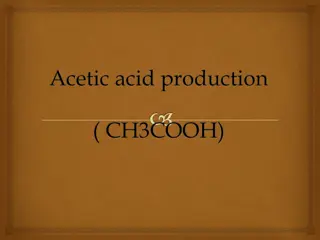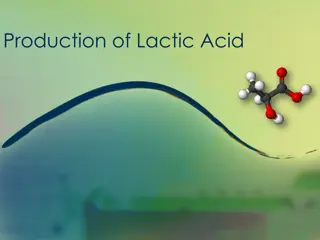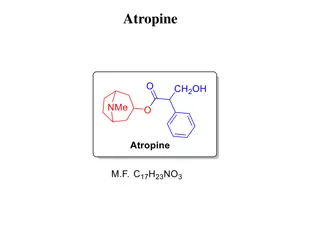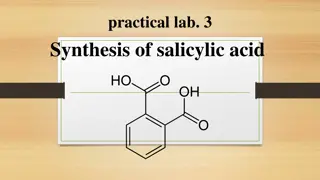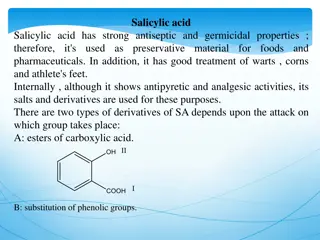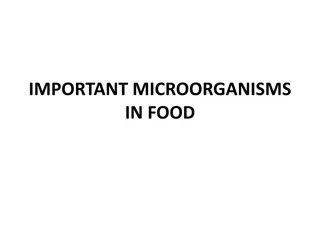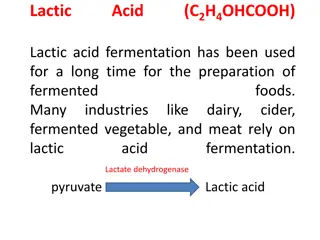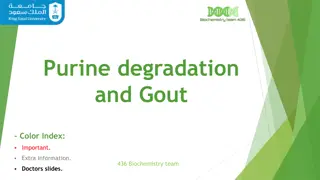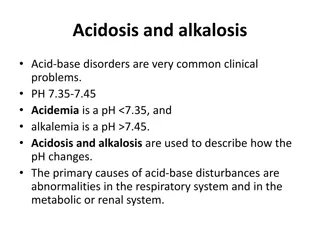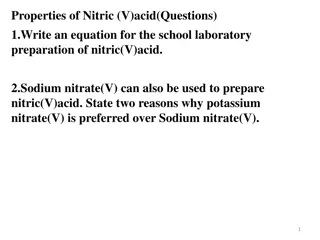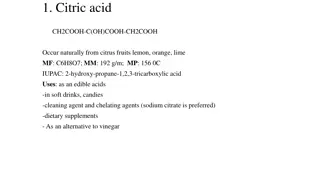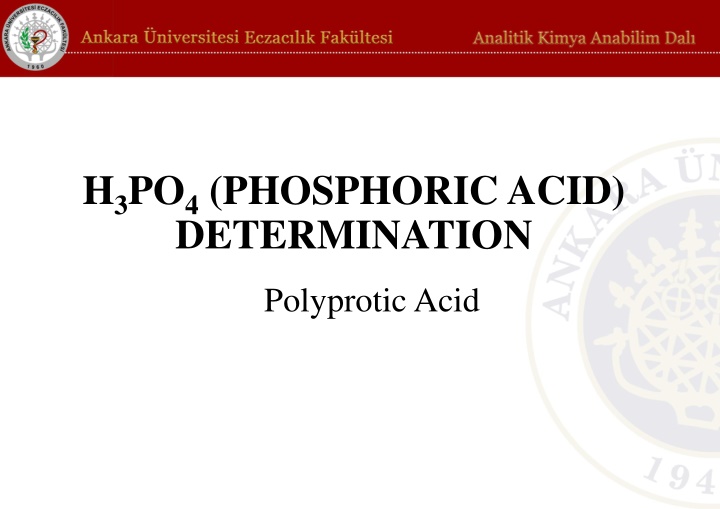
Phosphoric Acid Determination Experiment Procedure
Learn about the determination of phosphoric acid (H3PO4) as a polyprotic acid using a titration method. Understand the concept of multiple ionizable hydronium ions in polyprotic acids and how to calculate the concentration of phosphoric acid in a sample. Follow a step-by-step procedure to carry out the experiment and analyze the results for accurate determination.
Download Presentation

Please find below an Image/Link to download the presentation.
The content on the website is provided AS IS for your information and personal use only. It may not be sold, licensed, or shared on other websites without obtaining consent from the author. If you encounter any issues during the download, it is possible that the publisher has removed the file from their server.
You are allowed to download the files provided on this website for personal or commercial use, subject to the condition that they are used lawfully. All files are the property of their respective owners.
The content on the website is provided AS IS for your information and personal use only. It may not be sold, licensed, or shared on other websites without obtaining consent from the author.
E N D
Presentation Transcript
H3PO4(PHOSPHORIC ACID) DETERMINATION PolyproticAcid
Phosphoric acid Polyprotic acids contain more than one mole ionizable hydronium ions per mole of acids. They ionize to give more than one H+ions per molecule. H3PO4is a polyprotic acid. It contains 3 protons and has three acidities different from each other. H3PO4ionize in three steps. In each step it gives one proton. The 3rd proton of phosphoric acid cannot be titrated in aquous solutions as it is very weak.
Reaction Equation: H3PO4+ NaOH NaH2PO4+ H2O Ka1= 7.11x10-3 (End point of bromocresol green ) NaH2PO4+ NaOH Na2HPO4+ H2O Ka2= 6.34x10-8 (End point of phenolphthalein) H3PO4+ 2NaOH Na2HPO4+ 2H2O Total acidity
Procedure of Experiments: Each student receives 20 mL of phosporic acid sample with unknown concentration in a 100 mL volumetric flask. Dilute the given sample to 100 mL with distilled water. Transfer 25 mL of sample to an erlenmeyer flask with your single-volume pipette. Add 1 drop of bromocresol green and 1 drop of phenolphthalein. Titrate with standard NaOH until blue-green color and note the volume of titrant used (V1) Continue titration until violet color and note the volume of titrant used for second part. (V2)
Calculation: The concentration of phosphoric acid in the sample is calculated in g / L (MW: 98) Determination of 1stproton (1st acidity): The moles of NaOH consumed during titration can be calculated from the following equation using the volume of NaOH that is consumed in the titration and the molarity of NaOH. nNaOH= MNaOH V1
According to reaction equation: If 1 mol NaOH reacts with 1 mol H3PO4 x mol H3PO4 nNaOHmol NaOH reacts with From this ratio, the moles of H3PO4in the diluted sample (? = nH3PO4) is calculated and the molarity of the diluted sample is calculated from x. MH3PO4= ? ? / VH3PO4 The molarity of the original sample (M??????) can then be calculated by multiplying the molarity of the diluted sample by the dilution factor. M? ?? ?? ?? ?? ?? ?= MH3PO4 DF Finally, the molarity is multiplied by the molecular weight to convert the concentration of the original sample to g/L: C(g L) = M? ?? ?? ?? ?? ?? ? 98
Determination of 2ndproton (2nd acidity): The moles of NaOH consumed during titration can be calculated from the following equation using the volume of NaOH that is consumed in the titration and the molarity of the NaOH. According to reaction equation: nNaOH= MNaOH V2 If 1 mol NaOH reacts with nNaOHmol NaOH reacts with From this ratio, the moles of H3PO4 in the diluted sample (? = nH3PO4) is calculated and the molarity of the diluted sample is calculated from x. The molarity of the original sample (M??????) can then be calculated by multiplying the molarity of the diluted sample by the dilution factor. M? ?? ?? ?? ?? ?? ?= MH3PO4 DF Finally, the molarity is multiplied by the molecular weight to convert the concentration of the original sample to g/L: C(g L) = M? ?? ?? ?? ?? ?? ? 98 Analitik Kimya Pratikleri-Kantitatif Analiz(Ed. Feyyaz ONUR), A. . Eczac l k Fak ltesi Yay nlar No. 111, 2014 1 mol H3PO4 x mol H3PO4 MH3PO4= ? ? / V H3PO4 Reference:
Determination of total acidity: Transfer 25 mL of sample to an erlenmeyer flask. Add 2 drops of phenphthalein. Titrate with standard NaOH until pink color and note the volume of titrant. nNaOH= MNaOH VNaOH According to reaction equation: If 2 mol NaOH reacts with 1 mol H3PO4 x mol H3PO4 nNaOHmol NaOH reacts with From this ratio, the moles of H3PO4in the diluted sample (? = nH3PO4) is calculated and the molarity of the diluted sample is calculated from x. MH3PO4= ? ? / V H3PO4
The molarity of the original sample (M??????) can then be calculated by multiplying the molarity of the diluted sample by the dilution factor. Finally, the molarity is multiplied by the molecular weight to convert the concentration of the original sample to g/L: M? ?? ?? ?? ?? ?? ?= MH3PO4 DF C(g L) = M? ?? ?? ?? ?? ?? ? 98








